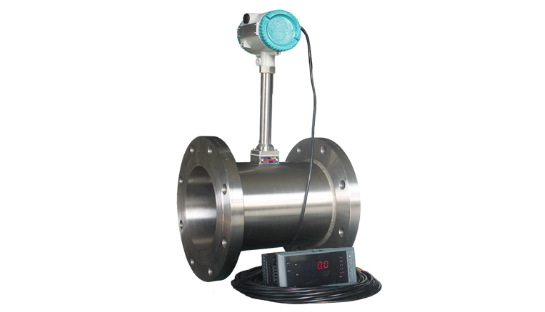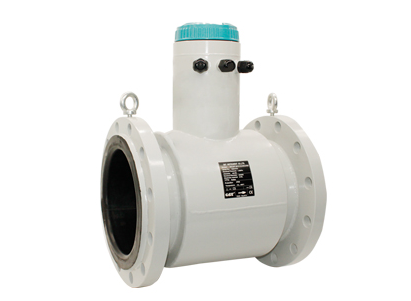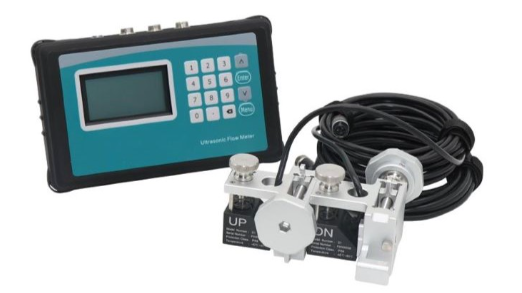Seawater Flow Meter
2024-06-27
1. Type of flow meter
There are many types of seawater flow meters, according to the working principle can be divided into vortex, electromagnetic, ultrasonic and so on. Among them, electromagnetic flowmeters and ultrasonic flowmeters have been widely used in seawater flow measurement because of their cost performance and stability.
(1) Vortex Flow Meter
Advantages:
Simple structure and easy maintenance.
It is not sensitive to the parameters of fluid conductivity, temperature, pressure and density, so it has a wide range of applications.
High measurement accuracy can be maintained over a wide flow range.
Cons:
It is sensitive to impurities and particles in the fluid, which may lead to measurement errors.
At low flow rates, measurement accuracy may be affected.
The installation requirements of vortex flowmeters are high, and it is necessary to ensure the stability of fluid flow and the length of the straight pipe section.

(2) Electromagnetic Flow Meter
Advantages:
High measurement accuracy up to ±0.5% or higher.
It is sensitive to the conductivity of fluids and is suitable for most seawater measurement scenarios.
Can measure fluids with low electrical conductivity, such as fresh water or low salt water.
Cons:
It is sensitive to bubbles and suspended solids in the fluid, which may lead to measurement errors.
The fluid is required to have a certain conductivity, and the measurement is limited for seawater with very low conductivity or high purity water.
There are more impurities in seawater, the electrode of electromagnetic flowmeter is easy to scale, and the maintenance cost is higher in the later period.

(3) Ultrasonic Flow Meter
Advantages:
Non-contact measurement with little impact on fluid flow characteristics.
Suitable for fluids with low conductivity or fluids containing bubbles and particles.
Non-conductive fluids can be measured and are unaffected by fluid pressure and temperature.
Cons:
The requirements on the flow state of the fluid are high, and it is not suitable for the occasion of serious turbulence.
At low flow rates, measurement accuracy may be affected.
The cost of ultrasonic flowmeter is high, and the installation environment and the technical level of the operator are required to be high.

In summary, different types of seawater flowmeters have advantages and disadvantages, and in practical applications, it is necessary to choose the appropriate flowmeter type according to the specific use scenario, fluid characteristics and measurement requirements.
2. Measuring range
The measuring range of seawater flowmeter is usually related to its design structure, pipe diameter and flow rate. In general, flowmeters can measure flow ranges from a few liters per minute to several thousand cubic meters per hour.
3. Precision and accuracy
The precision and accuracy of seawater flowmeter is an important index to evaluate its performance. High quality flowmeters typically have an accuracy of ±0.5% to ±1%, which can meet the needs of most seawater flow measurements.
4. Installation and maintenance
The installation of seawater flow timing should consider the flow direction of the fluid, pipe diameter, pressure and other factors to ensure that the flow meter can work normally. At the same time, regular maintenance and maintenance is also an important measure to maintain the performance and accuracy of the flow meter, such as cleaning the measuring tube, checking the sensor and so on.
5. Application field
Seawater flowmeter is widely used in Marine environmental protection, seawater desalination, ocean engineering, aquaculture and other fields. In these fields, the accuracy and stability of seawater flowmeters are of great significance for protecting the Marine environment and improving the efficiency of seawater utilization.
6. Environmental adaptability
Due to the corrosive and high salinity characteristics of seawater, seawater flowmeters need to have good environmental adaptability. High quality flowmeters are usually made of corrosion-resistant materials and are treated with special processes to ensure that they work properly in harsh Marine environments.
7. Technological trends
With the continuous progress of science and technology, the technology of seawater flowmeter is also constantly developing. In the future, seawater flowmeters will develop in the direction of higher precision, more stable and more intelligent. At the same time, with the application of technologies such as the Internet of Things and big data, the remote monitoring and intelligent management of seawater flowmeters will also be further improved.
In short, as an important tool in the field of Marine engineering and environmental protection, the development of its technology and application is of great significance to promote the sustainable use and protection of Marine resources.
If you want to know more about the flow meter or flow meter selection, please consult the Aister flow meter manufacturer email: sales@aistermeter.com for help.
There are many types of seawater flow meters, according to the working principle can be divided into vortex, electromagnetic, ultrasonic and so on. Among them, electromagnetic flowmeters and ultrasonic flowmeters have been widely used in seawater flow measurement because of their cost performance and stability.
(1) Vortex Flow Meter
Advantages:
Simple structure and easy maintenance.
It is not sensitive to the parameters of fluid conductivity, temperature, pressure and density, so it has a wide range of applications.
High measurement accuracy can be maintained over a wide flow range.
Cons:
It is sensitive to impurities and particles in the fluid, which may lead to measurement errors.
At low flow rates, measurement accuracy may be affected.
The installation requirements of vortex flowmeters are high, and it is necessary to ensure the stability of fluid flow and the length of the straight pipe section.

(2) Electromagnetic Flow Meter
Advantages:
High measurement accuracy up to ±0.5% or higher.
It is sensitive to the conductivity of fluids and is suitable for most seawater measurement scenarios.
Can measure fluids with low electrical conductivity, such as fresh water or low salt water.
Cons:
It is sensitive to bubbles and suspended solids in the fluid, which may lead to measurement errors.
The fluid is required to have a certain conductivity, and the measurement is limited for seawater with very low conductivity or high purity water.
There are more impurities in seawater, the electrode of electromagnetic flowmeter is easy to scale, and the maintenance cost is higher in the later period.

(3) Ultrasonic Flow Meter
Advantages:
Non-contact measurement with little impact on fluid flow characteristics.
Suitable for fluids with low conductivity or fluids containing bubbles and particles.
Non-conductive fluids can be measured and are unaffected by fluid pressure and temperature.
Cons:
The requirements on the flow state of the fluid are high, and it is not suitable for the occasion of serious turbulence.
At low flow rates, measurement accuracy may be affected.
The cost of ultrasonic flowmeter is high, and the installation environment and the technical level of the operator are required to be high.

In summary, different types of seawater flowmeters have advantages and disadvantages, and in practical applications, it is necessary to choose the appropriate flowmeter type according to the specific use scenario, fluid characteristics and measurement requirements.
2. Measuring range
The measuring range of seawater flowmeter is usually related to its design structure, pipe diameter and flow rate. In general, flowmeters can measure flow ranges from a few liters per minute to several thousand cubic meters per hour.
3. Precision and accuracy
The precision and accuracy of seawater flowmeter is an important index to evaluate its performance. High quality flowmeters typically have an accuracy of ±0.5% to ±1%, which can meet the needs of most seawater flow measurements.
4. Installation and maintenance
The installation of seawater flow timing should consider the flow direction of the fluid, pipe diameter, pressure and other factors to ensure that the flow meter can work normally. At the same time, regular maintenance and maintenance is also an important measure to maintain the performance and accuracy of the flow meter, such as cleaning the measuring tube, checking the sensor and so on.
5. Application field
Seawater flowmeter is widely used in Marine environmental protection, seawater desalination, ocean engineering, aquaculture and other fields. In these fields, the accuracy and stability of seawater flowmeters are of great significance for protecting the Marine environment and improving the efficiency of seawater utilization.
6. Environmental adaptability
Due to the corrosive and high salinity characteristics of seawater, seawater flowmeters need to have good environmental adaptability. High quality flowmeters are usually made of corrosion-resistant materials and are treated with special processes to ensure that they work properly in harsh Marine environments.
7. Technological trends
With the continuous progress of science and technology, the technology of seawater flowmeter is also constantly developing. In the future, seawater flowmeters will develop in the direction of higher precision, more stable and more intelligent. At the same time, with the application of technologies such as the Internet of Things and big data, the remote monitoring and intelligent management of seawater flowmeters will also be further improved.
In short, as an important tool in the field of Marine engineering and environmental protection, the development of its technology and application is of great significance to promote the sustainable use and protection of Marine resources.
If you want to know more about the flow meter or flow meter selection, please consult the Aister flow meter manufacturer email: sales@aistermeter.com for help.
Share To:
Previous Post:
Next Post:
News
- Why is the thermal gas mass flowmeter not affected by pressure strength and temperature?
- What to do when a thermal gas mass flow meter fails?
- How are thermal gas mass flow meters used? What are the applications?
- Under what circumstances is the gas measurement need to be regulated compensated vortex flowmeter
- Why Is The Aister Thermal Gas Mass Flowmeter So Popular ?
- Gas turbine flowmeter manufacturers explain their main advantages in measurement
- Gas turbine flowmeter manufacturer Aister instrument field experience summary
- Aister Instrument Empowerment Conference








